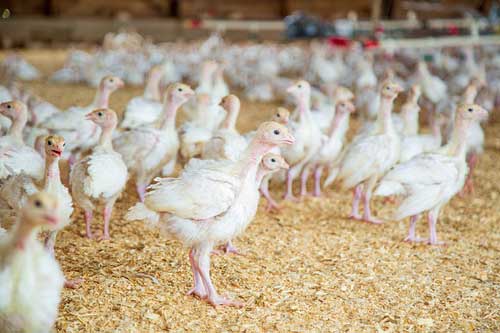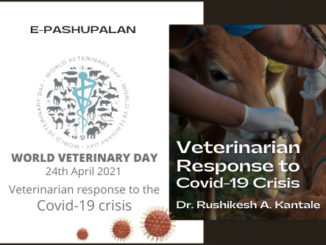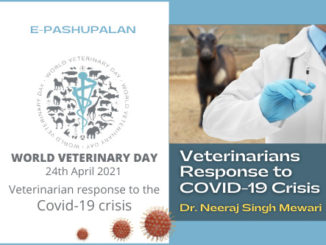Avian influenza, also known as “Bird flu” is a disease caused by strains of influenza virus that primarily affects birds. In the late 1990s, a new strain of bird flu arose that was known for its ability to cause severe disease and death, especially in domesticated birds such as ducks, chickens, or turkeys. As a result, this strain was called highly pathogenic (meaning very severe and contagious) avian influenza and termed H5N1. A new strain of bird flu was identified in China in 2013, the Influenza A virus termed as H7N9 (H7N9 Chinese bird flu). The strain is antigenically different from the H5N1 bird flu virus. Unfortunately, the H7N9 strain of bird flu seems to be genetically unstable. Since its discovery, at least 48 different subtypes of H7N9 have been identified. Because some H7N9 viruses are persistent in some chicken flocks in China, researchers are concerned that the strains will continue to swap genes with other flu viruses and may start a new pandemic. Since the identification of highly pathogenic influenza, infected birds have been found in Asia, Europe, the Middle East, and Africa. Careful control measures, including destroying infected flocks and vaccinating healthy birds, have reduced the number of cases, but the virus continues to exist in poultry flocks in areas of Asia and Africa.

Pathogenesis
- Transmission
- Migratory waterfowl, sea birds, or shore birds are considered responsible for introducing the virus into poultry. Waterfowl serve as reservoir for AIV.
- The virus spreads to susceptible birds through inhalation of influenza particles in nasal and respiratory secretions and from contact with the faeces of infected birds.
- Once introduced into a flock, the virus spreads from flock to flock by the movement of infected birds, contaminated equipment, egg flats, feed trucks, and service crews etc.
- Airborne transmission may occur if birds are in close proximity.
- Vertical or vector borne transmission is not completely established.
- Incubation period
- The incubation period is usually 3 to 7 days, depending upon the subtype of virus, the species, and age of the bird.
- Morbidity and mortality
- Morbidity and mortality rates are upto 100 percent within 2 to 12 days after the first signs of illness in HPAI
Clinical Signs
Bird flu symptoms include:
- Marked depression with ruffled feathers,
- Inappetence
- Excessive thirst
- Cessation of egg production
- Watery diarrhea
- Mature chickens show swollen combs, wattle, and edema surrounding the eyes
Risk factors
Humans may get bird flu from contact with infected birds (chickens, for example) or their infected droppings and secretions.
Risk factors include:
- Caring for sick birds
- Killing sick birds
- Preparing sick birds for consumption.
Despite the large number of people who have contact with poultry every day in the world, human cases of bird flu remain rare but mutations like antigenic shifts may reduce such difficulties. The H1N1 pandemic that started in Mexico is an example of such a mutation (swine flu to human flu).
Although direct contact with sick poultry poses the highest risk for bird flu, indirect exposure to bird feces or other materials such as bird eggs is also a risk. Contact with unwashed eggs from sick birds or water contaminated by poultry feces poses a potential risk of disease.
Diagnosis
- Samples from dead birds: Intestinal contents (faeces) or cloacal swabs, oro-nasal swabs, trachea, lungs, air sacs, intestine, spleen, kidney, brain, liver and heart are the ideal material.
- The presence of virus is confirmed by-
- Detection of HA activity
- Agar gel immunodiffusion (AGID) test
- RT-PCR
- Antigen capture ELISA
- The field diagnosis is based on sudden deaths followed with severe depression, inappetence, a drastic decline in egg production, presence of facial edema, swollen and cyanotic combs and wattles, and petechial hemorrhages on internal membrane are suggestive of HPAI.
Prognosis
The prognosis in human cases of bird flu remains poor. Many cases occur in people who are poor, live in rural areas in underdeveloped countries, and do not have access to modern intensive-care units or antiviral therapy. Approximately 55% of people diagnosed with H5N1 bird flu eventually die from the disease; the H7N9 strain has a similar death rate of about 37%. Individuals who survive may have long-term problems if organ systems are severely damaged.
Complications in humans
The complications of bird flu are frequently dire and include
- Shortness of breathor difficulty breathing,
- Pneumonia
- Acute respiratory distress syndrome (ARDS)
- Abdominal pain
- Lung collapse
- Shock
- Altered mental status
- Seizures
- Organ system failure
- Death
Unfortunately, individuals who become infected with bird flu often have one or more the complications listed above. The mortality (death) rate varies somewhat between strains with H5N1 at about 55%, and H7N9 at about 37%
Treatment
Amantadine hydrochloride provide relief to birds when administered in drinking water. However, it results in emergency of strains that are resistant to Amantadine hydrochloride
- Vaccination
- Inactivated oil-emulsion vaccines are found to be effective in reducing mortality, preventing disease, or both, in chickens and turkeys.
- Naturally avirulent or attenuated strains can also be used as vaccines. The problem with live vaccine is emergence of new strains due to genetic reassortment. A recombinant fowl pox virus vaccine containing the gene that codes for the production of the H5
- Bio-security procedures including control of human traffic, quarantine of birds of unknown disease status into the flock and proper cleaning and disinfection of fomites.
Prevention
Best way to prevent infection with avian influenza A viruses is to avoid sources of exposure whenever possible. Human infections with bird flu viruses can happen when enough virus gets into a person’s eyes, nose or mouth, or is inhaled.
People who work with poultry or who respond to avian influenza outbreaks are advised to follow recommended biosecurity and infection control practices; these include
- Use of appropriate personal protective equipment
- Careful attention to hand hygiene
- People responding to poultry outbreaks should get a seasonal influenza vaccination every year
Handling of dead birds
State and local agencies have different policies for collecting and testing birds, so check with your state health department, state veterinary diagnostic laboratory, or state wildlife agency for information about reporting dead birds in your area.
Don’t handle birds with your bare hands instead use gloves or an inverted plastic bag to place the carcass in a garbage bag and then dispose it properly.
Preparing food
- It is safe to eat properly handled and cooked poultry. However, consumers should handle raw poultry hygienically and cook all poultry and poultry products (including eggs) thoroughly before eating.
- There are no evidences that any human cases of avian influenza have ever been acquired by eating properly cooked poultry products, however, uncooked poultry and poultry products (like blood) have been linked to human infections with organisms other than influenza. Proper cooking kills influenza viruses.
- Although bird flu is contagious and spreads easily among birds, it is uncommon for it to be transmitted to humans
Public health risk assessment for human infection with avian influenza A(H5) viruses
- Whenever avian influenza viruses are circulating in poultry, there is a risk for sporadic infection and small clusters of human cases due to exposure to infected poultry or contaminated environments. Therefore, sporadic human cases are not unexpected.
- With continued incidence of avian influenza due to existing and new influenza A(H5) viruses in poultry, there is a need to remain vigilant in the animal and public health sectors. Community awareness of the potential dangers for human health is essential to prevent infection in humans. Surveillance should be continued to detect human cases and early changes in transmissibility and infectivity of the viruses.
Avian influenza A viruses may be transmitted from animals to humans in two main ways:
- Directly from birds or from avian influenza A virus-contaminated environments to people.
- Through an intermediate host, such as a pig.
Globally, from January 2003 to 17 December 2020, there were 862 cases of human infection with avian influenza A (H5N1) virus reported from 17 countries. Of these 862 cases, 455 were fatal (CFR of 53%). The last case was reported from Lao PDR on 13 October 2020
Important
- Antigenic shift results when a new influenza A subtype to which most people have little or no immune protection infects humans. If this new virus causes illness in people and can be transmitted easily from person to person, an influenza pandemic can occur. It also is possible that the process of reassortment could occur in a human.
- Theoretically, influenza A viruses with a hemagglutinin against which humans have little or no immunity that have reassorted with a human influenza virus are more likely to result in sustained human-to-human transmission and pandemic influenza. Thus, careful evaluation of influenza viruses recovered from humans who are infected with avian influenza is very important to identify reassortment if it occurs.
| The content of the articles are accurate and true to the best of the author’s knowledge. It is not meant to substitute for diagnosis, prognosis, treatment, prescription, or formal and individualized advice from a veterinary medical professional. Animals exhibiting signs and symptoms of distress should be seen by a veterinarian immediately. |








Be the first to comment